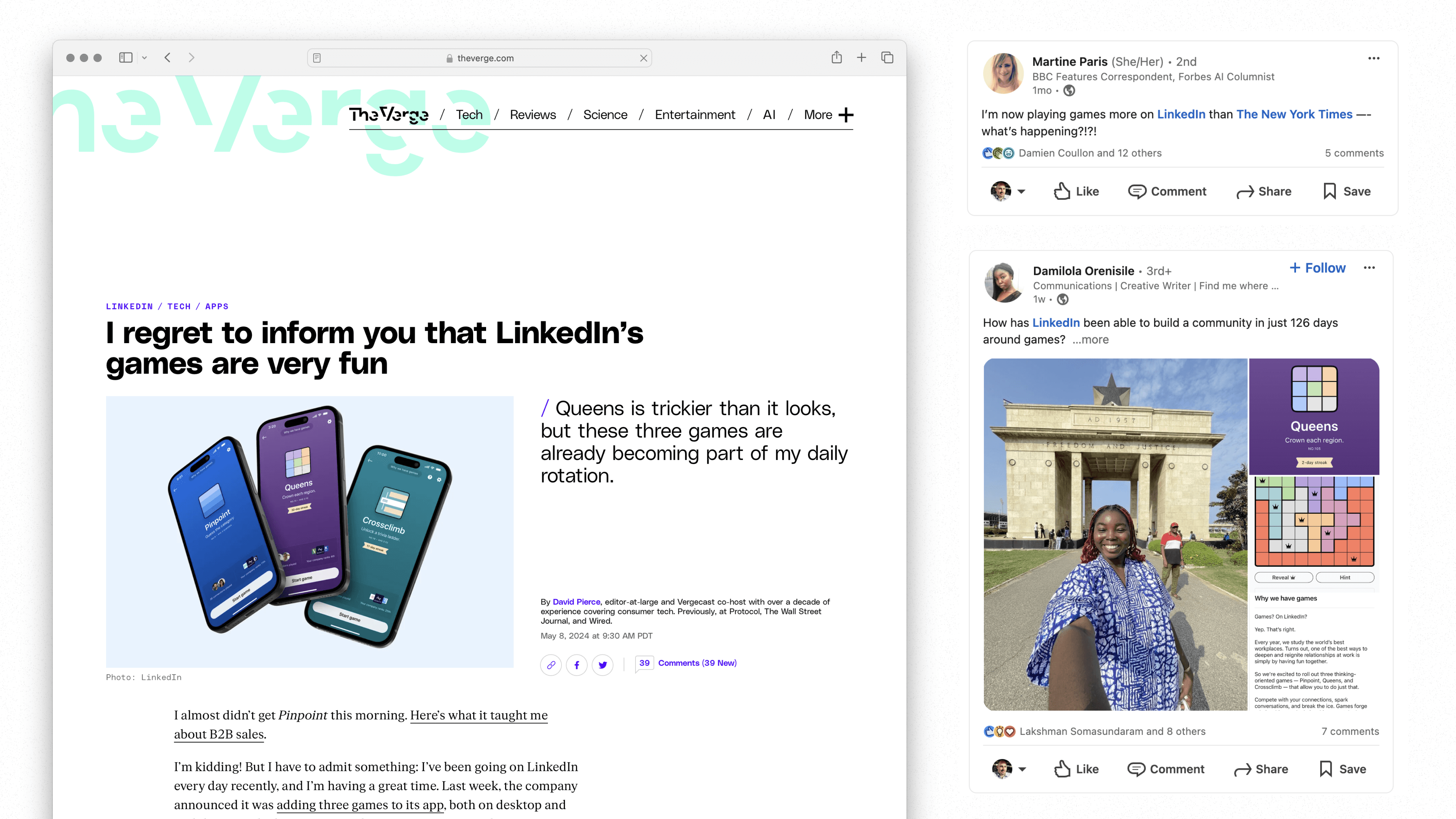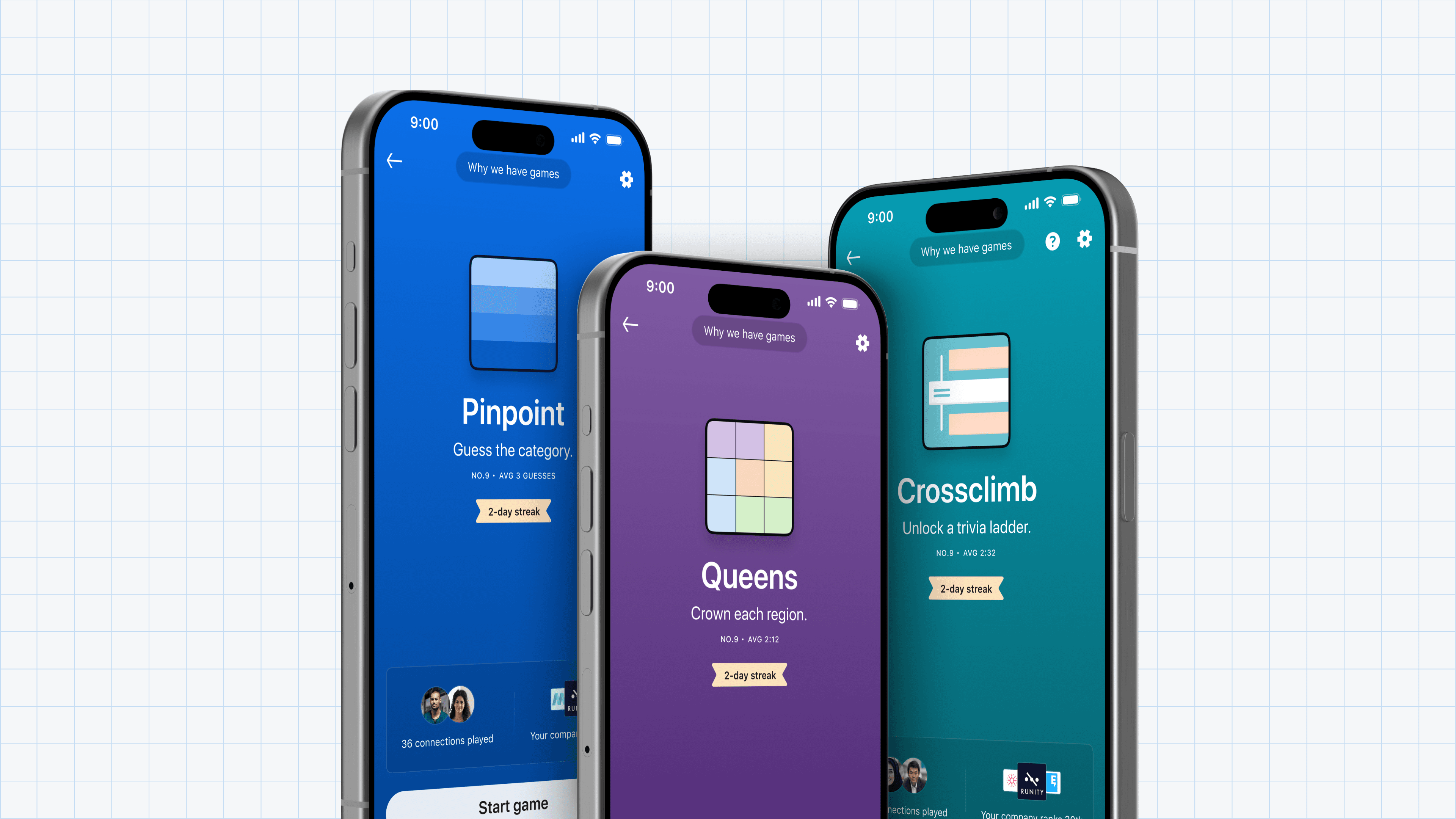
Why games on LinkedIn?
Games on LinkedIn? Yep. Every year, we study the world’s best workplaces, and one thing is clear—having fun together strengthens relationships. So we set out to bring games to LinkedIn to help people connect in a more natural, engaging way.
Many members struggle to start conversations and maintain professional relationships. Seeing this, I saw an opportunity to turn play into a tool for connection. Our goal was simple: introduce lighthearted experiences that make it easier to spark conversations, build relationships, and make work feel more human.
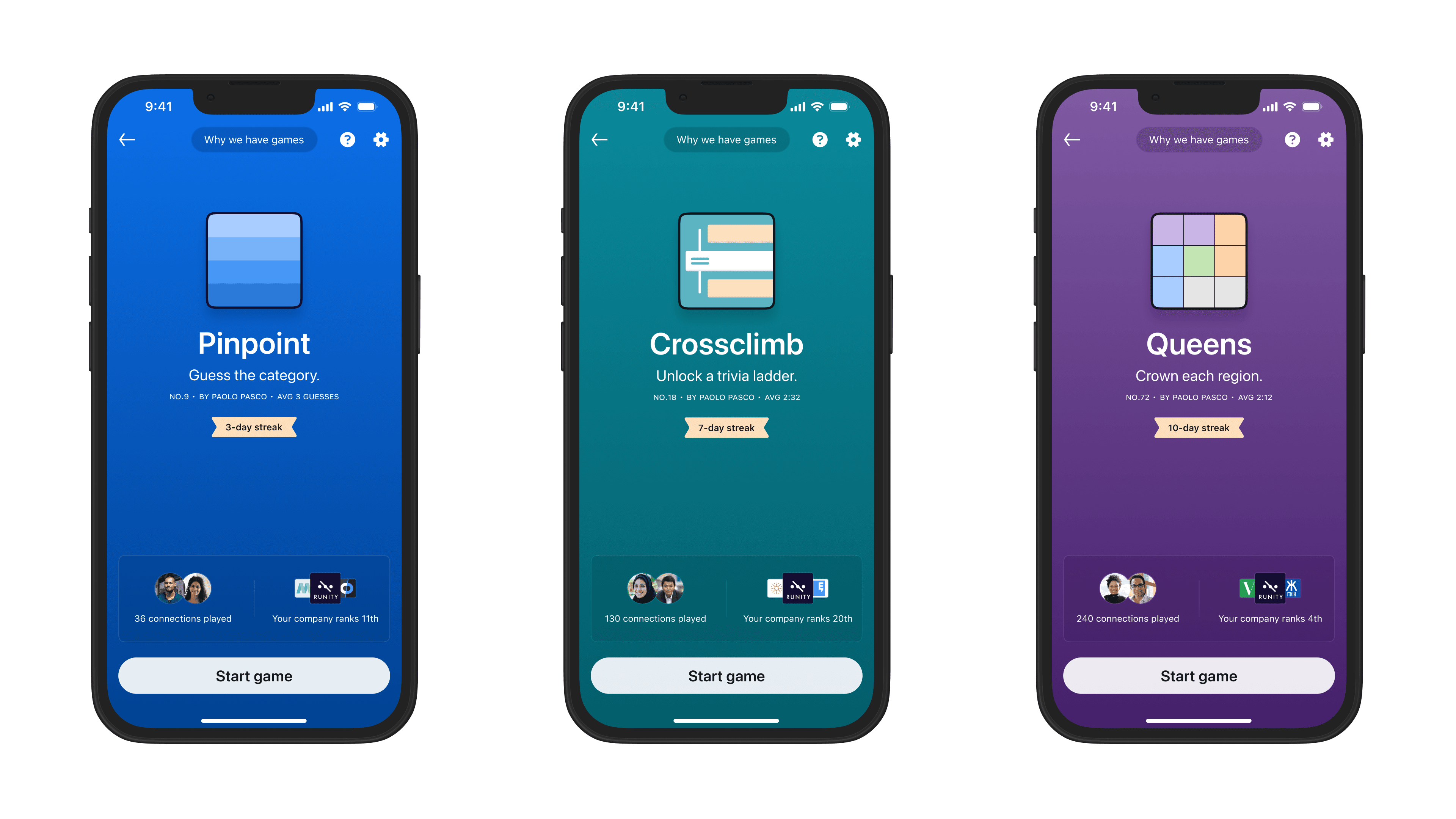
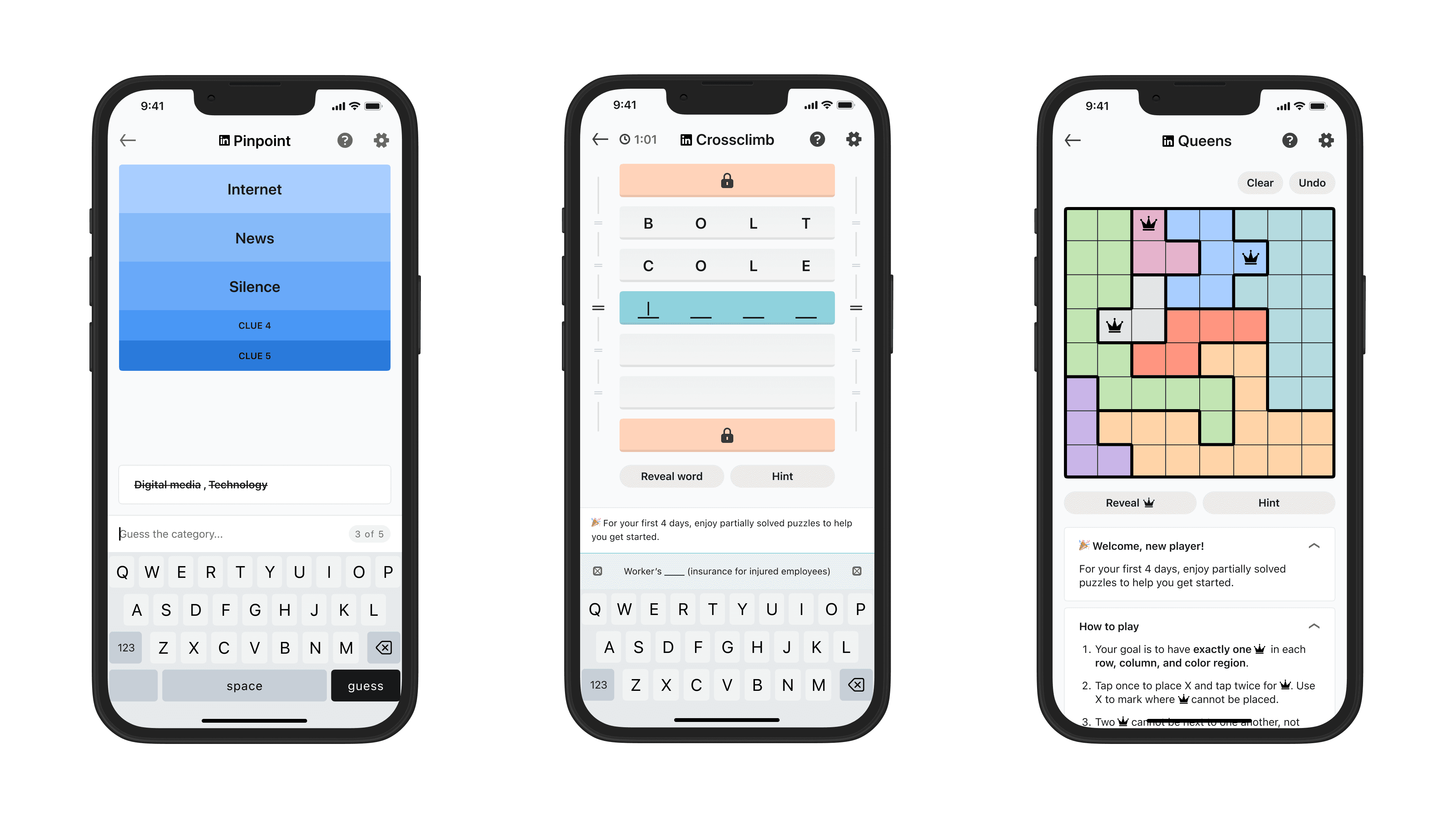
Designing purposeful play
I led the initiative to design games tailored for workday breaks—quick to learn in under a minute, playable in less than five, yet challenging enough to be rewarding. We developed realistic prototypes incorporating sound, motion, and haptics to delight users. Start screens were crafted to grab attention, clearly explain the game, and entice players, with careful consideration given to names, icons, and colors to make each game distinct.
To boost engagement, features were implemented to display which connections had played, along with player rankings by company or school. End screens celebrated success, encouraged score sharing, and introduced streaks and achievements to motivate daily participation.
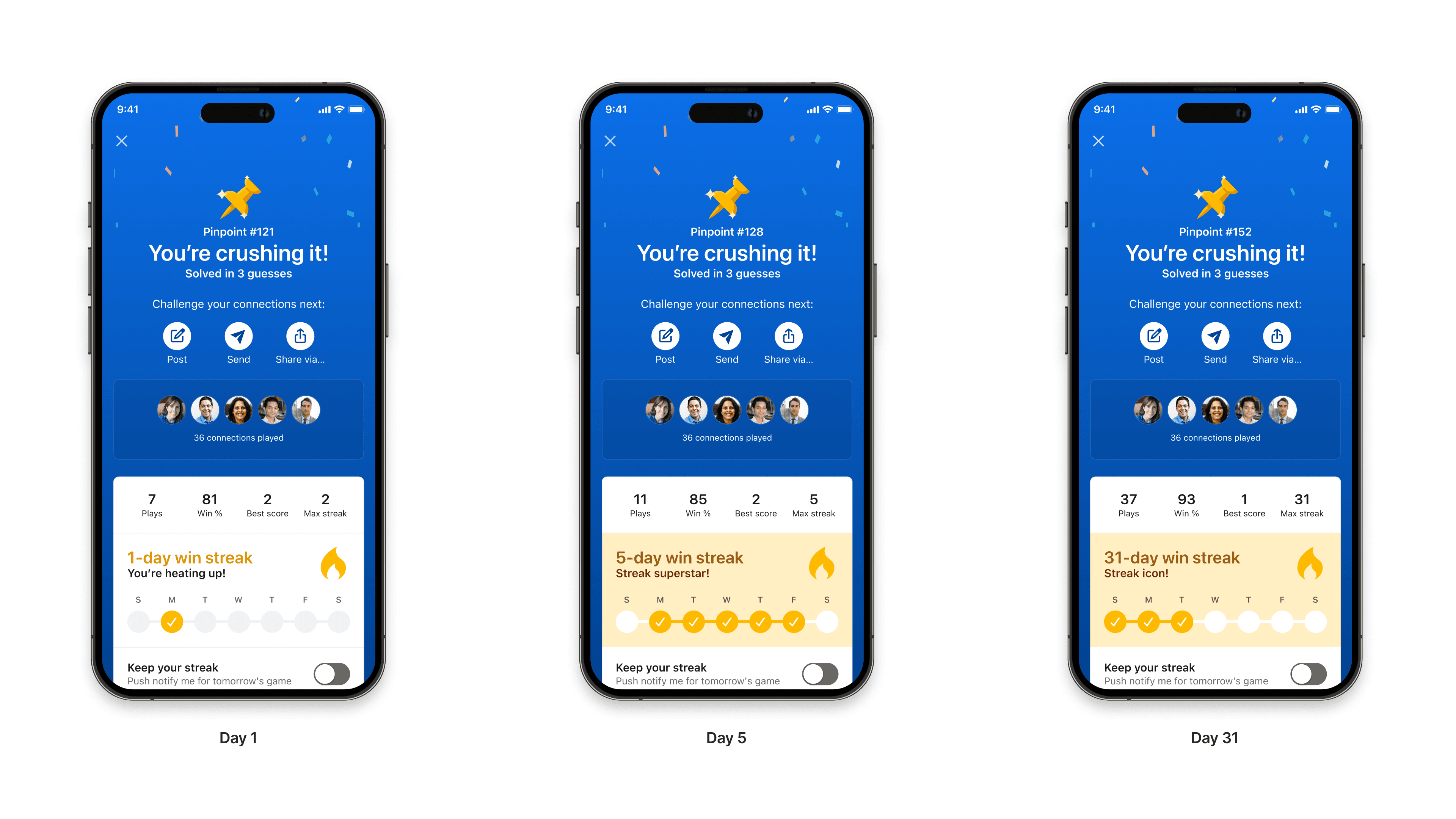
From concept to connection
Despite initial skepticism within LinkedIn about launching games, the initiative has been well-received. Members and the public have found the games enjoyable and effective in fostering connections. The press, albeit begrudgingly at times, admits they're fun and foster connections.
LinkedIn games are helping deepen and reignite professional relationships. Growth is fueled by people connecting and sharing scores, with nearly half of new players joining through a connection that messaged them. Engagement has remained strong, with players returning consistently over time. This bold experiment has proven its value, and I’m proud of what we’ve achieved.
Key takeaways & lessons learned
This initiative reinforced a simple truth: people connect better when they’re having fun. Games helped bridge engagement gaps, proving that even professional platforms benefit from play. By designing quick, enjoyable experiences, we made it easier for people to interact naturally without disrupting LinkedIn’s core mission.
Social features kept players engaged. Seeing connections’ scores and rankings sparked friendly competition and encouraged participation. These elements made interactions feel dynamic, helping people build and maintain relationships effortlessly.
Games on LinkedIn have given members a fresh way to connect and engage. Their success proves that adding play to professional spaces strengthens relationships and fosters meaningful interactions.
